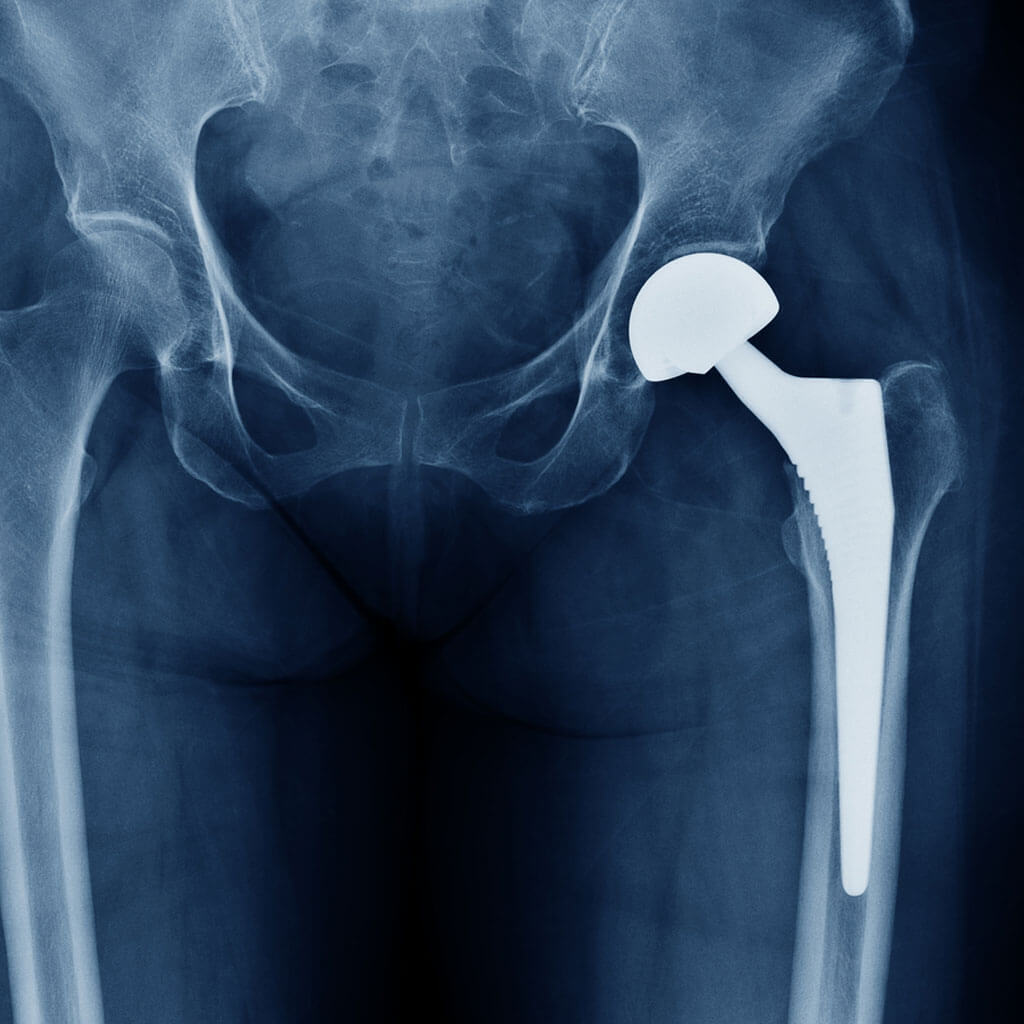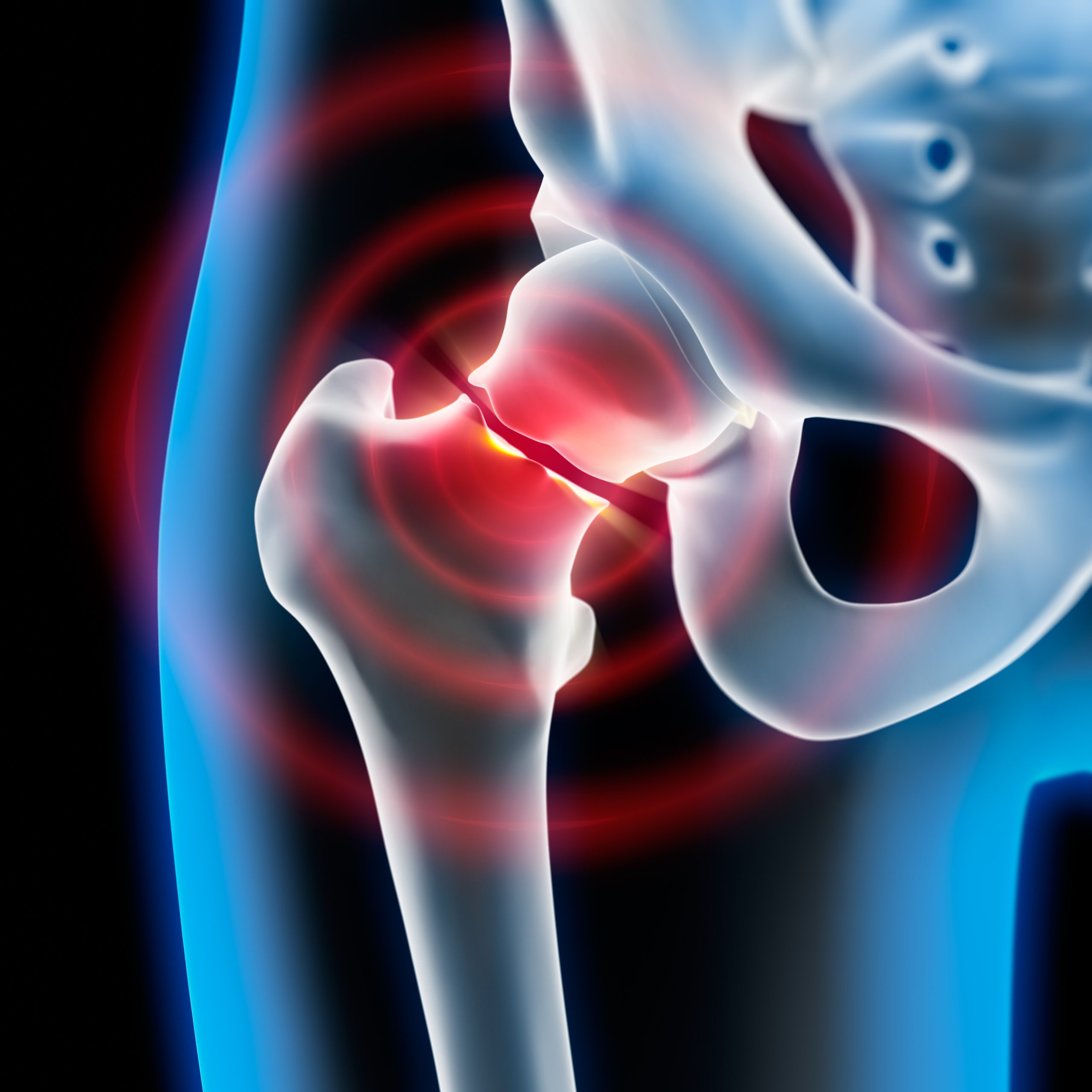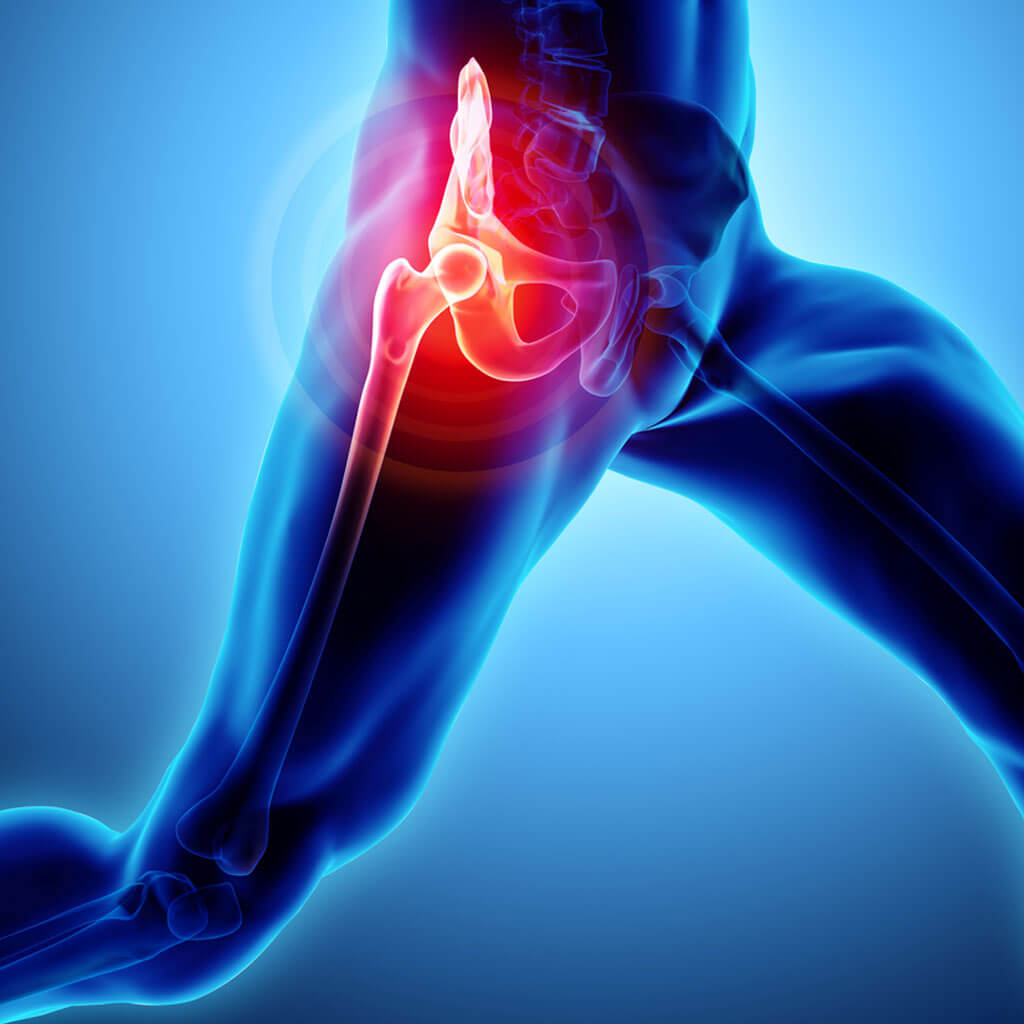What is Hip Replacement?

This is a surgical procedure that involves replacing the joint surfaces of the hip. The replacement of the femoral joint surface may involve a prosthesis with a stem that is placed deep in the femur (conventional hip replacement) or sits on its surface (hip resurfacing). The acetabular joint surface is also replaced with a prosthesis. Both femoral and acetabular components may be inserted with or without cement
Prostheses are made of polyethylene, metal (cobalt chrome, stainless steel, titanium or metal alloys) and ceramic.
The shape and condition of your bone, your age, associated medical conditions and planned activity level all impact the choice of prosthesis selected.
Surgery is carried out under either general or regional (spinal/ epidural) anaesthetic.
Robotic assisted surgery may be beneficial in some cases. This can be discussed at your consultation.
Indications for Surgery
Pain in the hip or knee at rest and/or at night that does not respond to painkillers and modification of activity, in association with changes in the hip on x-ray. Marked stiffness of the joint is also an indication.
Age is not a determinant factor. If you are medically well enough to tolerate an anaesthetic, you can have a hip replacement.
Benefits of Surgery
The benefits from surgery are the relief of pain and improvement in range of hip motion.
The hip replacement can be inserted though a conventional or minimally invasive approach. Your suitability for minimally invasive surgery will be discussed at your consultation.

Hip Replacement Surgery Information






Contact For Appointments
Please contact our joint replacement clinic to further discuss hip replacement surgery in London.